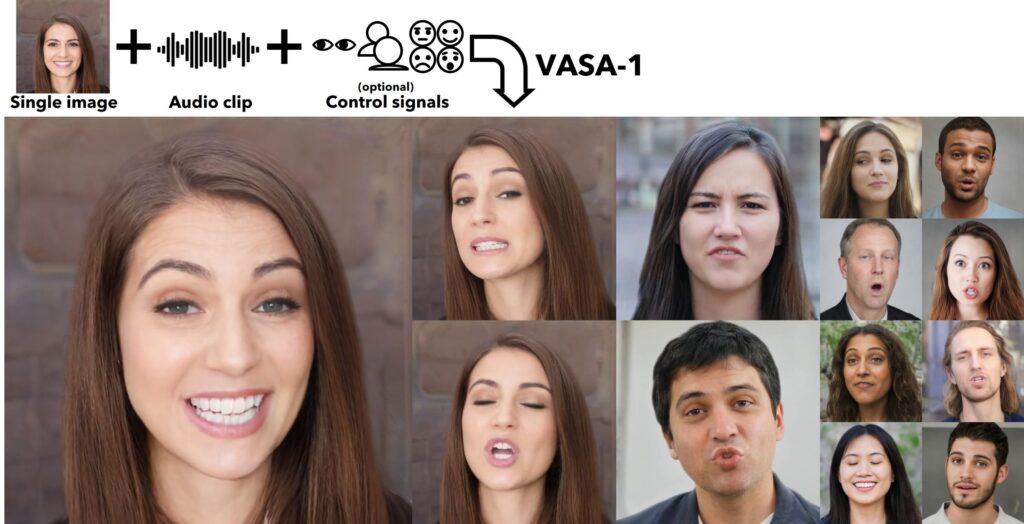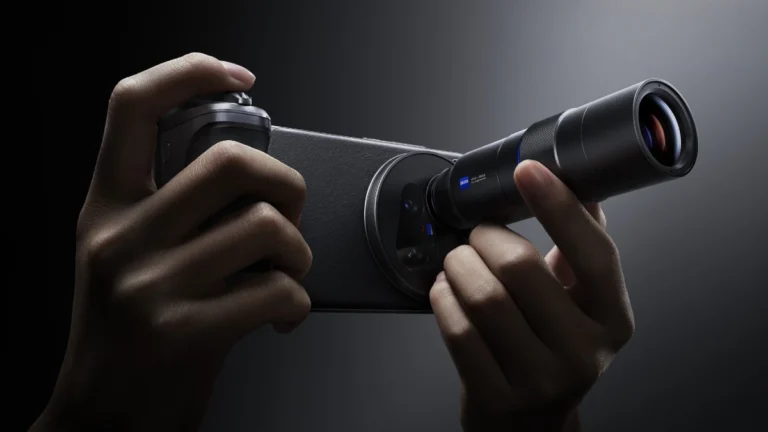In a monumental leap for artificial intelligence, Microsoft Research Asia has unveiled VASA-1 (Visual Affective Skills Animator), a revolutionary AI model that transforms a single static image and an audio clip into hyper-realistic talking face videos. Launched in April 2024, this technology synthesizes synchronized lip movements, expressive facial nuances, and natural head motions, creating videos that closely mimic human behavior. VASA-1 promises to redefine real-time video applications, from virtual avatars to immersive content creation.

What is VASA-1?
VASA-1 is an AI-driven framework designed to generate lifelike talking faces with unprecedented realism. Short for Visual Affective Skills Animator, it analyzes a single portrait photo—be it a photograph, painting, or digital avatar—and pairs it with a speech audio track to produce videos that feel authentic and engaging. Unlike earlier models, VASA-1 captures the subtle dynamics of human conversation, including emotional expressions and three-dimensional head movements, setting a new standard for facial animation.
Key Features of VASA-1
VASA-1 combines cutting-edge technology with versatile capabilities. Here are its standout features:
- Real-Time Video Generation: Produces 512×512 pixel videos at up to 40 frames per second with minimal latency, ideal for live applications like video conferencing and streaming.
- High Fidelity and Expressiveness: Captures subtle facial nuances, such as eye gaze and emotional expressions, resulting in highly realistic and expressive avatars.
- Versatile Input Compatibility: Supports diverse inputs, including photographs, digital art, and various audio types (speech, singing, or non-human voices), offering flexibility for creative projects.
- Holistic Facial Dynamics: Utilizes a face latent space to generate not just lip movements but also a wide range of facial expressions and natural head motions.
- Robust Training Foundation: Trained on the VoxCeleb2 dataset, featuring over one million utterances from 6,112 celebrities, ensuring high-quality results across voices and faces.
Potential Applications
VASA-1’s versatility opens up a world of possibilities across industries:
- Educational Content Creation: Enables educators to produce engaging instructional videos with lifelike virtual tutors, enhancing accessibility without on-camera appearances.
- Virtual Assistants: Powers dynamic avatars for customer service and support, improving user interaction in digital platforms.
- Entertainment Industry: Creates realistic characters for games, films, and virtual reality, streamlining production and enhancing immersion.
- Social Media and Content Creation: Offers creators a tool to produce professional-grade videos with minimal resources, revolutionizing content workflows.
- Video Conferencing: Provides lifelike avatars as alternatives to traditional video feeds, enhancing real-time communication.
Sample videos showcasing VASA-1’s capabilities are available on Microsoft’s official VASA-1 research page.
Ethical Considerations
While VASA-1’s capabilities are transformative, they also raise concerns about potential misuse, particularly in creating deepfakes. Microsoft is acutely aware of these risks and emphasizes responsible AI development. The company is actively developing forgery detection technologies to combat misinformation and unauthorized use. Currently, VASA-1 remains a research demonstration, not publicly available, allowing for careful evaluation before broader deployment. This commitment to ethical AI underscores Microsoft’s approach to balancing innovation with societal safety.
Why VASA-1 Matters
VASA-1 marks a significant milestone in AI-driven multimedia, surpassing earlier models like Alibaba’s EMO with its superior realism and dynamic head movements. Its ability to generate high-quality, real-time videos from minimal inputs positions it as a leader in facial animation technology. As AI continues to evolve, VASA-1 paves the way for immersive human-AI interactions, from virtual companions to therapeutic tools, while enhancing accessibility and creativity across sectors.
Looking Ahead
As Microsoft refines VASA-1, the technology holds immense promise for transforming how we interact with digital content. While ethical challenges remain, its potential to drive connectivity, education, and innovation is undeniable. VASA-1 offers a glimpse into a future where lifelike avatars seamlessly integrate into our daily lives, reshaping the boundaries of human-AI collaboration.
Stay tuned to Bix Academy for more updates on groundbreaking AI technologies like VASA-1. For in-depth details and demonstration videos, visit Microsoft’s official VASA-1 research page: https://www.microsoft.com/en-us/research/project/vasa-1/









